RMA-The Royal Marines Charity celebrates its 75th anniversary in 2021, marking the foundation of one of its predecessor organisations, the Royal Marines Association (RMA), in 1946.
After the Second World War, there was a Royal Marines Old Comrades Association (RMOCA) which flourished in branches normally in port cities, providing comradeship and mutual support, the demobilisation of some 80% of the then 77,000 Royal Marines posed a challenge to find employment on a huge scale. On the initiative of Lt Col Nicol Gray and Col Paine, RMA was established in early 1946 after an initial meeting on 27 November 1945.
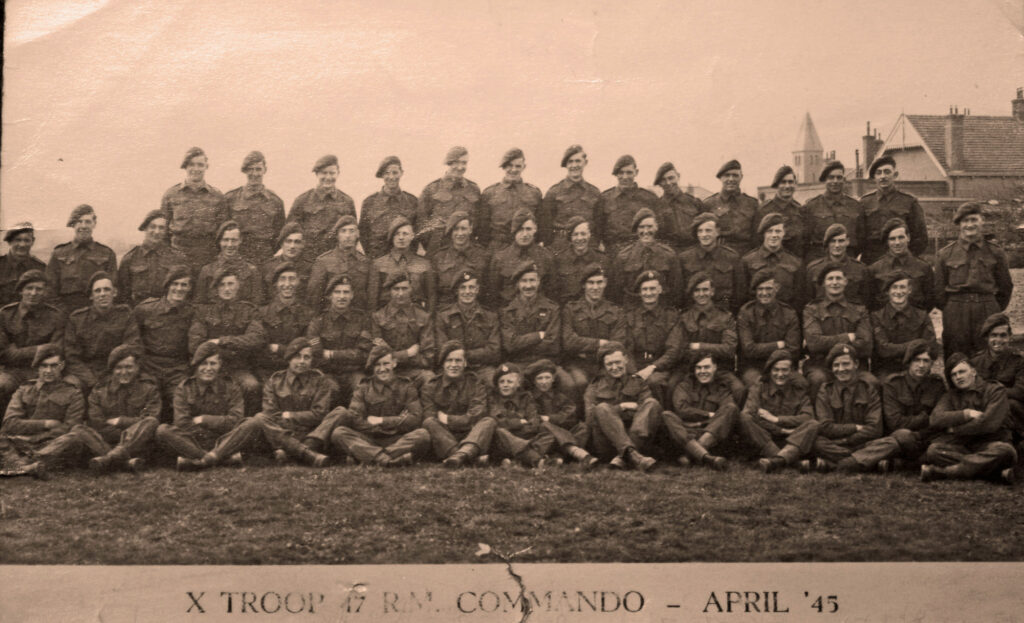
47 CDO 1945 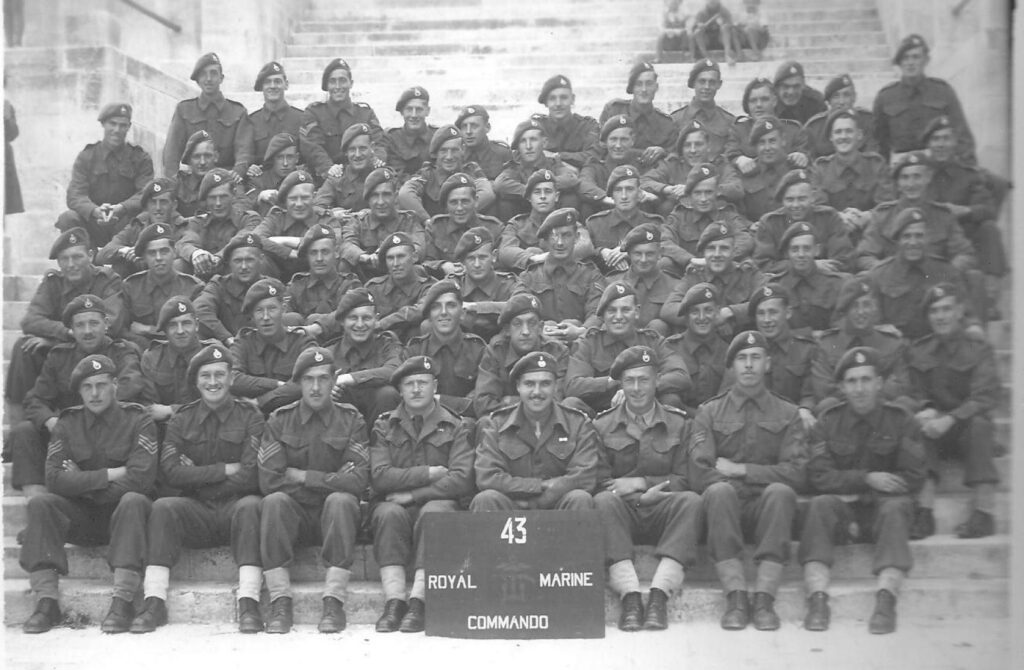
43 CDO 1944
RMA was initially based in an office in Queen Anne’s Mansions in Petty France, Westminster alongside the then Royal Marines HQ, with HM King George VI as Royal Patron and Lt Gen Sir Robert Sturges as President, and a monthly Executive Committee meeting with branch and regional representatives. The original aims were to help those going outside to find jobs, resettle and maintain contact with each other and the Corps, and to assist those in financial need, principally through assistance from the Royal Naval Benevolent Trust. There was a target for 50,000 members by the end of the first financial year 30 April 1947.
A new bespoke HQ was opened by Earl Mountbatten of Burma at 5 Talbot Square, London in 1948, by which time there were 155 branches and 30,000 members, and by the start of 1950 jobs had been found for 9,300 members. 1952 saw a step up in the employment and welfare sections, and the appointment of the first General Secretary followed a year later, and in 1954 the first annual reunion took place in Wigan,
1956
In 1956 Central Office moved in with the Royal Naval Association in Sloane Square, but membership had fallen to 12,000, followed by a further fall to 8,000 by 1964, the Tercentenary year when there were many events.
The War Memorial Pavilion at Eastney barracks became Central Office in 1965, while the first CTC-based reunion weekend was in 1975, and the first Graspan memorial parade took place in the Mall in 1976. By 1978 membership had levelled at 7,000 including 3,000 serving Royal Marines.
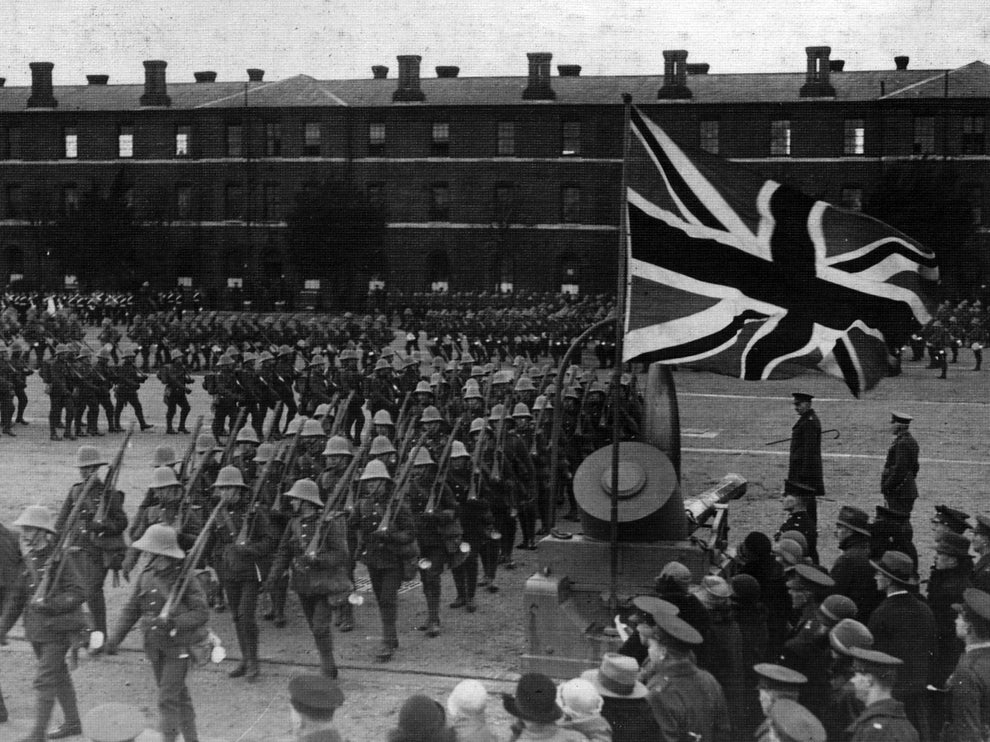
Eastney Barracks 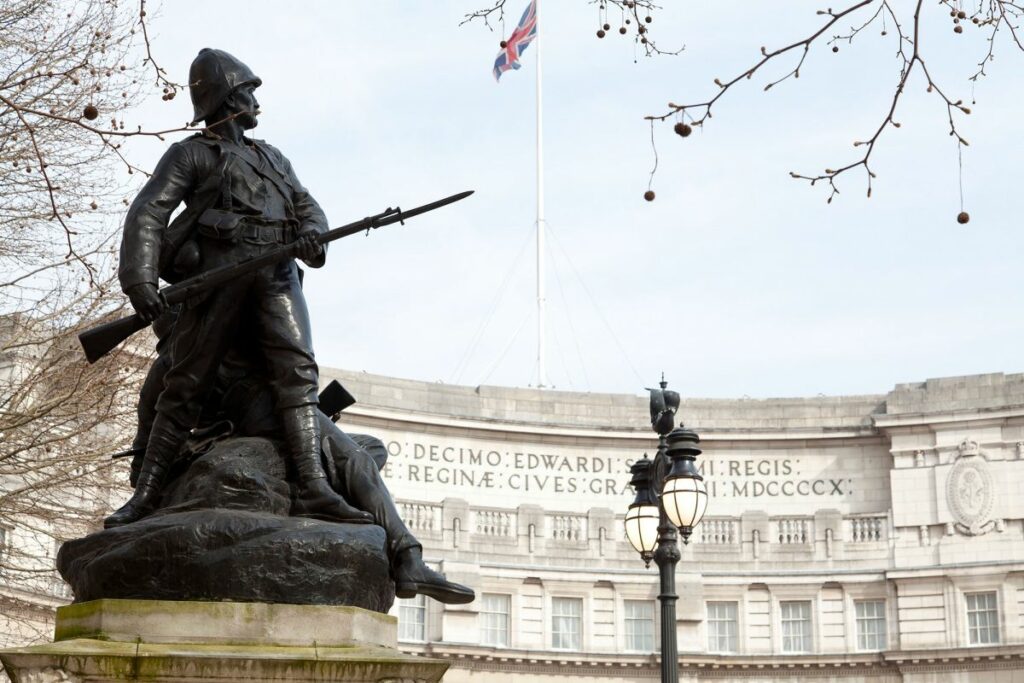
Graspan Memorial
1991
1991 saw Central Office move into two rooms in the old Officers’ Mess at Eastney as the Corps moved out of the barracks, prior to a further move in 2004 on to Whale Island Portsmouth, co-located with Director Royal Marines. In 2005 the first Chief Executive was appointed.
2001
The Corps saw significant action in Iraq and Afghanistan from 2001-14, and though Royal Marines make up only 4-5% of British armed forces, their elite skills (meaning they provide 45-50% of UK Special Forces) meant that they were disproportionately exposed to threat. As a consequence, though they won 25% of awards for bravery in Afghanistan, they sustained 13% of deaths and 16% of the serious injuries.
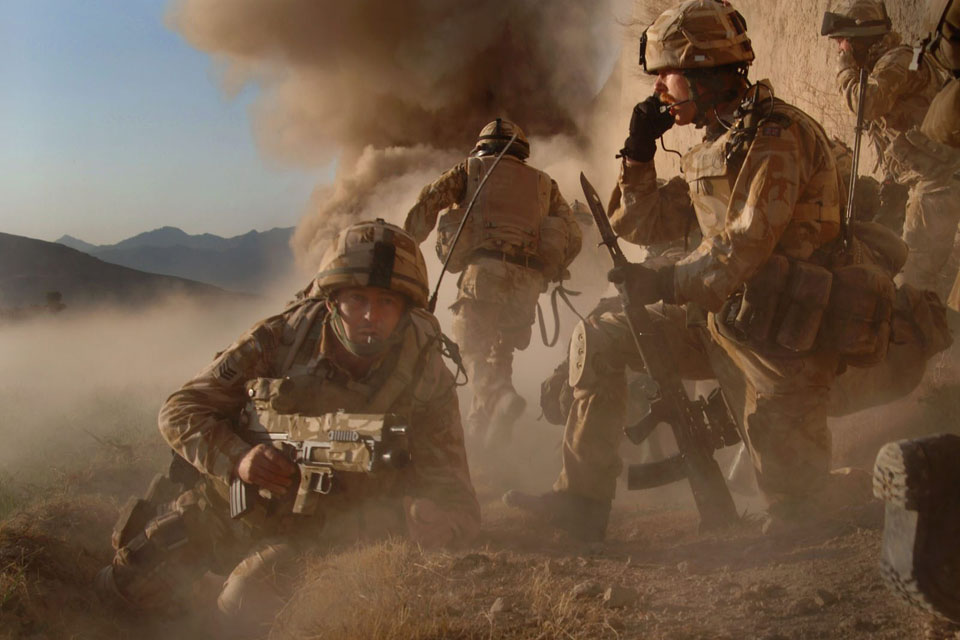
Royal Marines leave Afghanistan 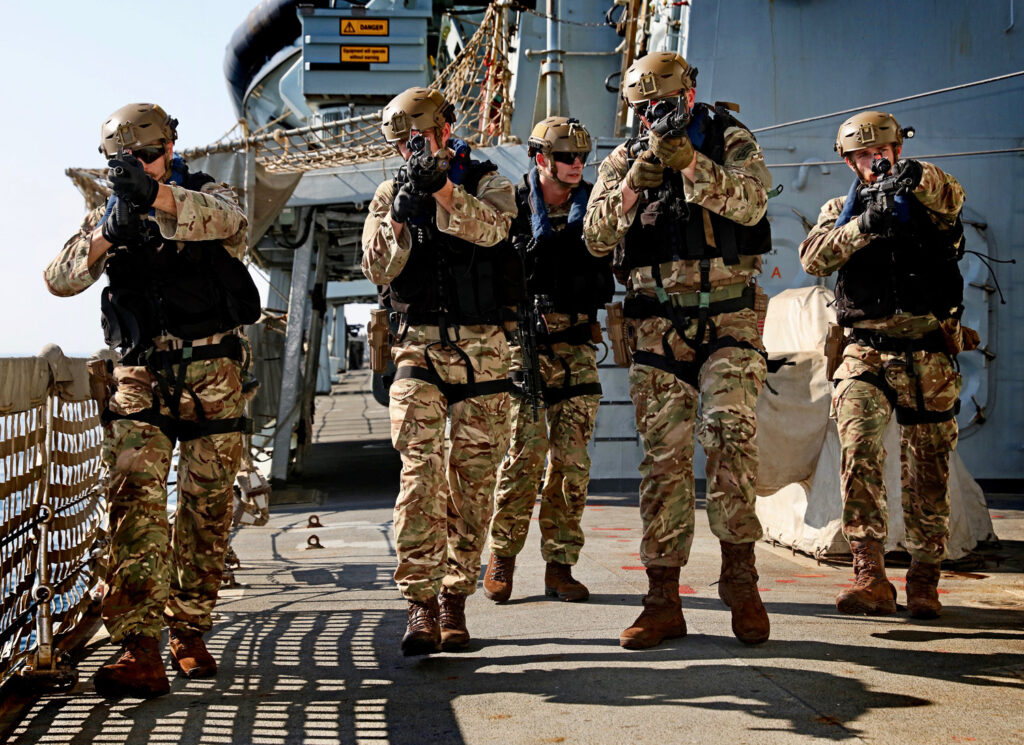
42 CDO Boarding Team, Iraq
As with the wider bow wave of public support for the Armed Forces which led to the establishment of Help for Heroes, there was a surge of support from the Royal Marines Corps Family to support the injured and families of the bereaved. This manifested itself in a number of initiatives and organisations being established to support the Corps Family, among them The C Group, Commando 999, Go Commando and Help Our Wounded. RMA also founded a Shop based in Stonehouse Barracks Plymouth, to generate profits which could be fed back into support for the Corps Family.
The Corps itself controlled over 20 charitable funds, principally the 1939 War Fund (now the General Fund of RMA-The Royal Marines Charity), originally set up to provide welfare and amenities support to the Corps in the Second World War, and the Royal Marines Benevolent Fund (RMBF), established in 1997 by the merging of a number of benevolent funds in order to support individuals and families in significant need. All these funds were brought together in 2008 into the Royal Marines Charitable Trust Fund (RMCTF), which was registered as a Charity in April 2010, though still administered by the Corps Secretariat. RMCTF had very wide charitable objects, including the efficiency of the Corps and assistance to individuals in need, which almost matched the objects of RMA.
2014
A campaign to raise a further £6M by the Corps Birthday in 2014, the 350th anniversary, was launched, and in 2011 the first CEO of RMCTF was appointed. The C Group became a formal subsidiary charity of RMCTF, and RMCTF itself became a subsidiary of the Royal Navy and Royal Marines Charity, itself brought into existence by the Royal Navy in 2007 to bring together almost 90 Naval charitable funds in order to provide a more efficient and joined up service to beneficiaries.
During the 350th year, 2014, RMA adopted a 5 year plan to refresh and renew the association, which at an early stage led to the growth of members from 8-10,000. In June, the trustees of RMA, RMCTF, The C Group and RNRMC met to address the possibility that the number of separate organisations was leading to confusion amongst beneficiaries concerning which organisation to approach for help, gaps in provision, and fratricide in fundraising. The Boards subsequently committed to merger in order to provide a one stop shop for support for the Corps Family, which would work in conjunction with the Corps, the Welfare service, RNRMC, other Naval Service charities and wider agencies and charities so that gaps in provision could be addressed by signposting to the most effective source of support without reinventing the wheel.

2016
The first merger took place on 1 January 2016 between RMCTF and The C Group, which had been set up in 2009 at CTCRM to assist those medically discharged from the Corps into work. The new entity took the name The Royal Marines Charity (TRMC), and moved its registered address from Whale Island to CTCRM, the heart and home of the Corps.
Further work to merge with RMA took longer due to the complexities of merging a non-incorporated association with an incorporated charity, the need to persuade the Members of RMA to surrender independence after over 70 years (RMOCA had remained in existence as a separate organisation until the 1970s despite the establishment of RMA), and the need to win the case with the RNRMC Board for a membership organisation to become part of the RNRMC Group.
2018
In 2018 annual national subscriptions were removed as part of an existing following a commitment from TRMC to underwrite the delivery of membership services and events, and after further final work, the merger of RMA with TRMC was achieved in April 2019 with the new entity’s legal name as ‘Royal Marines Association – The Royal Marines Charity’, operating under the simpler name ‘RMA-The Royal Marines Charity’. The Membership operation also moved from Whale Island to CTCRM. Commando 999, renamed Royal Marines Club, merged with the Charity in 2020, while Go Commando now operates in close collaboration.
Since 2010 when RMCTF was established, almost £21M has been distributed in grants across the Corps Family, but RMA-The Royal Marines Charity is now a whole service delivery charity. Operating from a HQ at CTCRM, but with satellite offices at Whale Island, Stonehouse Barracks Plymouth and Piccadilly in London, we offer preventative and reactive benevolence support to individuals and families in need, employment support to RM who are compulsorily discharged or who find themselves in need as veterans, membership services to the now over 16,000 members in 89 worldwide geographical and virtual branches (including sports, military specialisms and the arts), undergirded by an effective fundraising and communications function.
2020
In December 2020 the Charity delivered over the Gordon Messenger Centre at CTCRM to the Corps, providing a state of the art whole Corps Family resilience-enabling and community facility at the heart of the Corps, a £2.7M project started in 2014 which paralleled the mergers and recent history of the Charity.
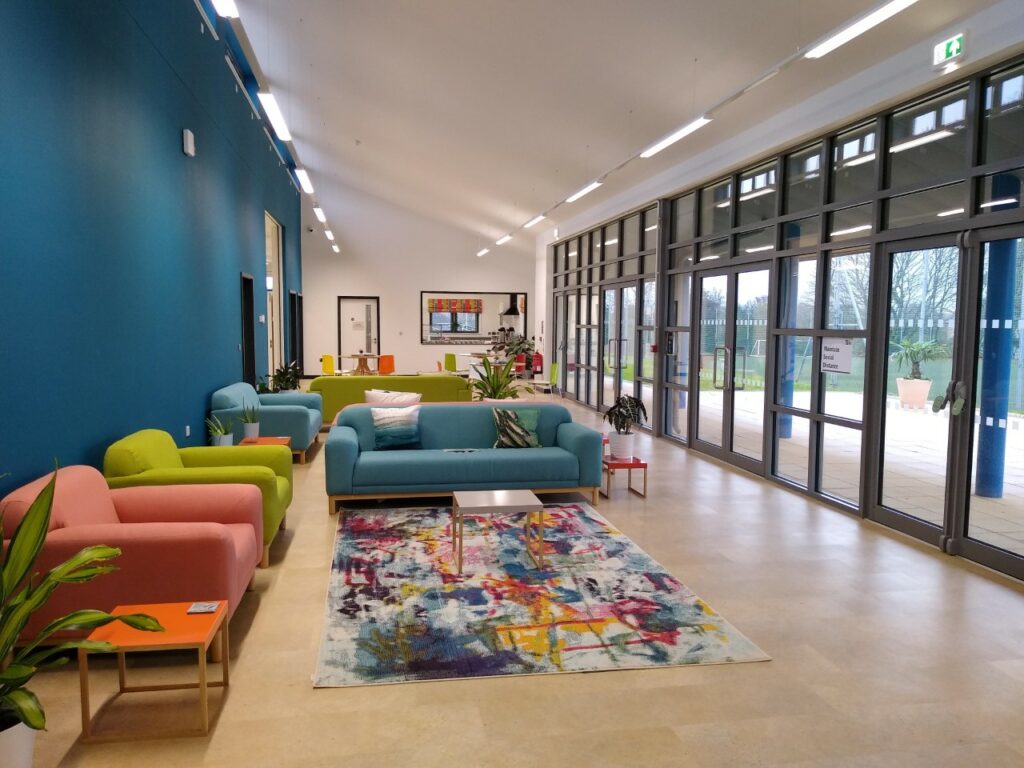
Sir Gordon Messenger Centre, 2021 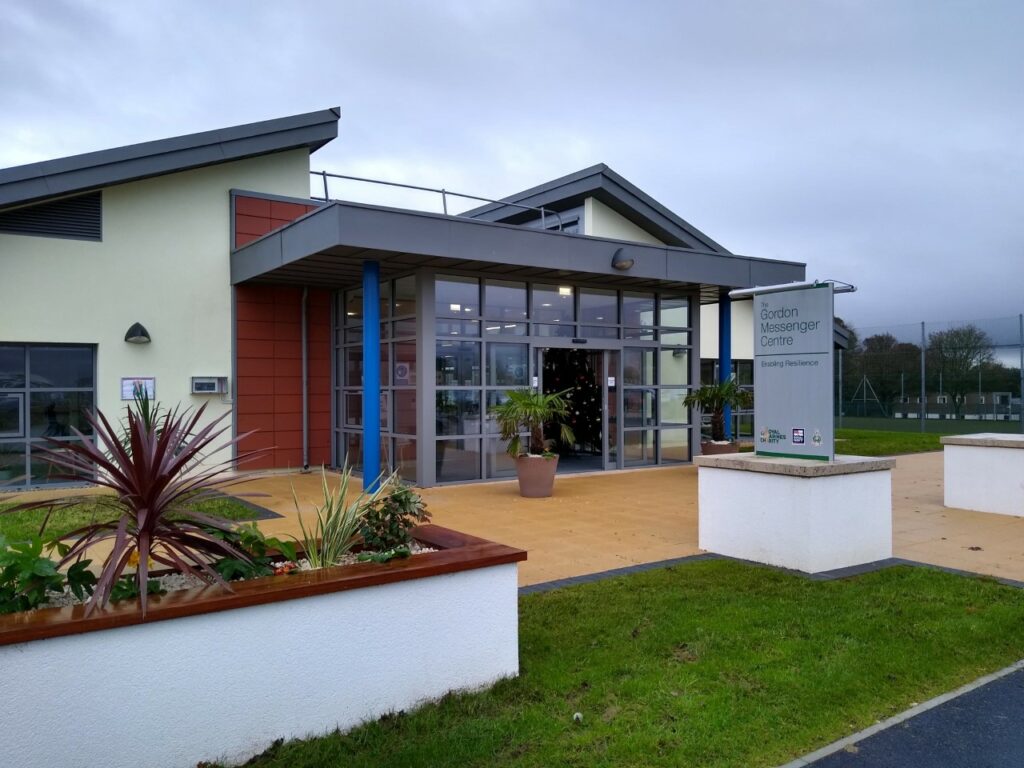
Funded by RMA – The Royal Marines Charity
